Jira is often associated with software development, agile teams, and bug tracking. It’s a tool many developers can’t live without. But, can it be used for task management outside of the tech world? The short answer is yes. Jira’s flexibility allows it to handle a wide range of tasks, even for teams in marketing, HR, operations, or any department that needs to manage workflows and deadlines efficiently.
This article explores how Jira can be used for task management in various industries and teams, its advantages, disadvantages, and a comparison with other task management tools like Trello, Asana, and Monday.com. By the end of this article, you’ll have a thorough understanding of how Jira works as a task management tool and whether it suits your team’s needs.
What is Jira?
Jira, developed by Atlassian, began as a bug and issue-tracking tool for software developers. However, its robust framework and customizable features quickly made it popular for agile project management, particularly in teams using Scrum and Kanban methodologies. Over time, Jira evolved to be more than just a tool for developers; it became a versatile platform that can be adapted to fit different industries and workflows.
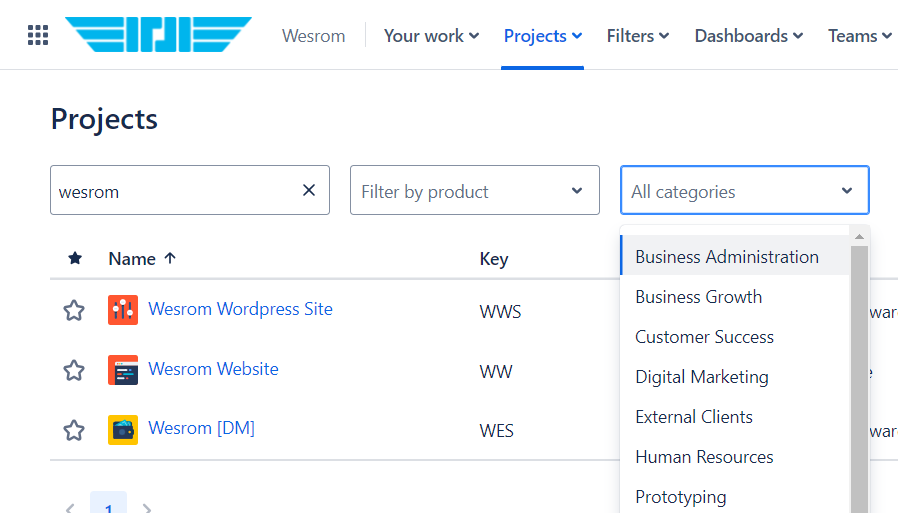
But is it strictly limited to development teams? Absolutely not. Many non-tech teams have successfully adopted Jira for general task management, managing everything from marketing campaigns to HR operations. Its strength lies in its flexibility. Jira allows you to customize your project boards, task types, and workflows, enabling you to tailor it for different business needs.
Jira as a Task Management Tool
Jira’s versatility extends beyond traditional project management. It is highly effective for day-to-day task management, especially for teams looking to track tasks, assign responsibilities, and ensure work gets done on time. Here’s how Jira functions as a task management tool:
1. Task Creation and Assignment
In Jira, tasks are referred to as “issues.” You can create different types of issues based on your workflow, such as tasks, bugs, stories, or sub-tasks. This flexibility makes it easy to assign tasks to different team members, track their progress, and add details like deadlines, comments, and attachments.
Once a task is created, it can be assigned to a specific person, team, or department. The assignee is notified about the task, ensuring that everyone is aligned on their responsibilities. Tasks can also be tagged, labeled, and categorized to make searching easier.
2. Customizable Workflows
One of Jira’s biggest advantages is its customizable workflows. In the context of task management, you can set up workflows that fit your team’s unique process. For instance, a typical task management workflow might include statuses like “To Do,” “In Progress,” and “Done.”
However, if your team requires a more complex process, you can add stages like “Awaiting Approval,” “QA Testing,” or “Blocked” to ensure every part of the process is accounted for. This ability to create custom workflows means Jira can adapt to both simple and complex task management needs.
3. Visual Task Boards
Jira’s task boards—either Kanban or Scrum boards—give a visual overview of your team’s tasks and their current status. Each task is represented by a card that can be moved from one stage to another, making it easy to track progress. This visual representation helps teams understand what’s in progress, what’s coming up, and what’s been completed.
For task management, many teams prefer Kanban boards, which allow for continuous workflow management. You can create columns representing stages in the workflow (e.g., To Do, In Progress, Done) and drag tasks between them as they progress. This simple, visual approach helps teams stay organized and ensures nothing falls through the cracks.
4. Tracking Deadlines and Progress
In task management, tracking deadlines is essential to ensure work is completed on time. Jira allows you to set due dates for tasks, assign priority levels, and track how long a task has been in progress. The system also offers notifications and reminders, so users don’t miss important deadlines.
Jira’s reporting capabilities provide insights into your team’s progress, helping you understand where tasks are getting stuck and which tasks are at risk of missing their deadlines. These reports can help team leaders identify bottlenecks and improve overall productivity.
5. Real-Time Collaboration
Jira promotes collaboration by allowing team members to comment on tasks, upload files, and tag colleagues directly within the task card. This ensures that all communications related to a task are centralized, reducing the need for endless email threads or multiple tools for task discussions.
By having everything in one place, teams can easily keep track of task updates, changes in priorities, or feedback from stakeholders. This level of collaboration is particularly beneficial for remote or distributed teams that need a central platform to manage their workflows.
Setting Up Jira for Task Management: A Step-by-Step Guide
Jira can be intimidating for new users, especially those unfamiliar with project management tools. However, setting up Jira for task management can be simplified with a few basic steps. Here’s how to set up Jira for managing tasks efficiently:
1. Create a New Project
The first step is to create a new project in Jira. When doing this, you’ll need to select the project template that fits your needs. For task management, the Kanban or Scrum project templates are ideal. While Scrum is great for teams working in short cycles (sprints), Kanban is better suited for continuous task management.
Once you’ve selected your template, you can name your project and define its purpose. For example, if you’re setting up Jira for a marketing team, you might create a project called “Marketing Campaigns” and use it to track all ongoing and upcoming campaigns.
2. Define Task Types
In Jira, tasks are known as issues. You can create different issue types to represent different kinds of tasks. For example, a marketing team might have issue types like “Blog Post,” “Social Media Update,” or “Email Campaign.” An HR team might create issue types like “Job Posting,” “Onboarding,” or “Employee Review.”
By defining different issue types, you ensure that each task has its own category, making it easier to track and manage them within the project.
3. Set Up Task Boards
Once your project is set up, you’ll have access to a task board where you can organize tasks visually. You can customize the columns to reflect your workflow stages. For task management, common columns include “To Do,” “In Progress,” and “Done,” but you can add additional stages if needed.
For example, a marketing team might add columns like “Awaiting Approval” or “Ready for Launch,” while an HR team might include stages like “Interview Scheduled” or “Offer Sent.”
4. Assign Tasks and Set Deadlines
After creating tasks, you can assign them to team members, set deadlines, and add details like attachments or comments. Jira allows you to prioritize tasks, making sure the most urgent work is completed first. You can also set dependencies between tasks, ensuring that one task is completed before another starts.
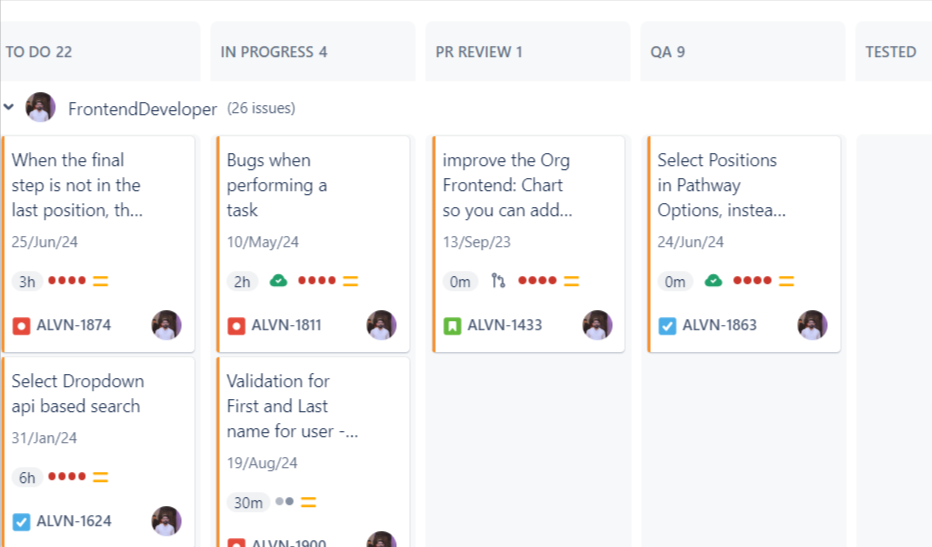
For example, in a marketing team, the task for writing a blog post might depend on completing the task for topic approval. These dependencies help keep the team on track and avoid bottlenecks.
5. Use Jira Reports to Track Progress
Jira comes with a range of reporting options that are highly beneficial for task management. You can generate reports that show how many tasks have been completed, which tasks are overdue, and how efficiently your team is working. Reports like the Burndown Chart or Cumulative Flow Diagram can give insights into team performance and help identify areas for improvement.
By regularly reviewing these reports, team leaders can adjust workloads, reassign tasks, or address any blockers that are slowing down progress.
Pros of Using Jira for Task Management
There are several reasons why Jira is a strong contender for managing tasks across various teams and industries.
1. Customization and Flexibility
Jira’s customization options allow teams to tailor their workflows, task boards, and issue types to fit their specific needs. Whether you’re managing a simple to-do list or complex workflows, Jira can be adapted to suit your requirements.
For example, a marketing team might have a completely different setup than an operations team, but both can use Jira effectively by customizing it to their needs.
2. Task Visibility and Transparency
Jira’s task boards provide a clear overview of all ongoing tasks, who is responsible for each one, and where they are in the workflow. This transparency ensures that everyone on the team knows what’s being worked on and what’s coming up next.
For teams that manage multiple tasks or projects simultaneously, this visibility is crucial to keeping everything on track.
3. Scalability
One of Jira’s key advantages is its scalability. Whether you’re a small startup managing a few tasks or a large enterprise handling complex projects, Jira can grow with your team. Its features are robust enough to manage tasks for any team size and project complexity.
4. Real-Time Collaboration
The ability to comment on tasks, upload files, and tag team members directly in Jira promotes collaboration and reduces the need for multiple communication channels. This real-time collaboration is especially valuable for remote teams or teams working across different time zones.
5. Integrations with Other Tools
Jira integrates seamlessly with other popular tools, such as Slack, Google Drive, and Confluence. This integration helps teams manage tasks and projects across multiple platforms while keeping everything centralized in Jira.
6. Reporting and Analytics
Jira includes powerful reporting tools that allow you to track task progress, monitor team performance, and identify bottlenecks. This helps managers make informed decisions and improve efficiency.
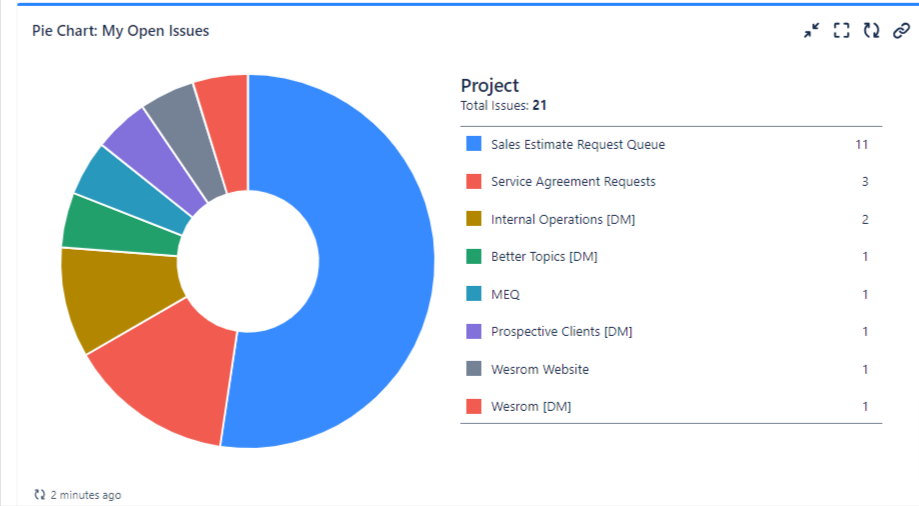
7. Agile Task Management
For teams that follow Agile methodologies, Jira is a natural fit. It includes features like sprint planning, backlogs, and burndown charts, which help Agile teams stay on track and manage their tasks efficiently.
How Jira Compares to Other Task Management Tools
How does Jira stack up against other popular task management tools? Here’s a comparison with three other popular platforms like Trello, Asana, and Monday.com.
1. Jira vs. Trello
Trello, also owned by Atlassian, is a simpler task management tool. It uses Kanban boards for managing tasks, much like Jira, but is more straightforward and easier to use. Trello is ideal for teams with simple task management needs and is much quicker to set up than Jira.
However, Trello lacks the advanced reporting and customization features that Jira offers. Teams looking for a more powerful tool to handle complex workflows may find Trello too limited.
2. Jira vs. Asana
Asana is another popular task management tool known for its clean, user-friendly interface. Like Jira, Asana offers customizable task boards, workflows, and reporting. However, Asana is generally easier to use and has a less steep learning curve.
While Asana is great for task management, it doesn’t offer the same level of flexibility and customization that Jira does. Teams looking for more control over their workflows might prefer Jira’s advanced features.
3. Jira vs. Monday.com
Monday.com is a highly visual task management tool that allows teams to manage tasks, projects, and workflows through customizable boards. Like Jira, Monday.com offers a high level of customization and is highly scalable.
However, Monday.com is generally seen as more user-friendly and quicker to set up than Jira. Teams looking for a balance between customization and ease of use might prefer Monday.com, especially if they don’t need Jira’s advanced features.
Best Practices for Using Jira for Task Management
Jira is a versatile and powerful tool, but its full potential can only be realized when used strategically. Below are several best practices that can help teams maximize their productivity and efficiency when using Jira for task management.
1. Customize Workflows to Fit Your Team’s Processes
Jira’s ability to customize workflows is one of its standout features. Each team has different processes, and with Jira, you can create workflows that reflect the stages tasks go through within your organization.
By tailoring workflows to fit your team’s processes, you reduce confusion and streamline task movement through different stages.
Review and update your workflows regularly to adapt to any changes in your team’s processes. As your team evolves, so should your workflows.
2. Use Labels and Filters to Organize Tasks
Jira’s labeling and filtering features allow for better organization, especially when managing large volumes of tasks. This feature allows you to search for tasks based on criteria such as assignee, status, labels, due dates, or project. Filters can be saved and shared with other team members. They can also be applied to dashboards, giving you a quick overview of the team’s progress at a glance.
Labels help categorize tasks into relevant groups, while filters help you quickly locate specific tasks based on various criteria. Encourage team members to apply relevant labels consistently. This will make it easier to search for tasks and create filtered views.
Once in a while, review and refine your labeling system to ensure it still meets the needs of the team. Too many labels can cause confusion, so keep things simple and relevant.
3. Take Advantage of Jira’s Automation Features
One of Jira’s hidden gems is its automation capabilities, which can save your team a lot of manual effort. Automation rules can be set up to trigger specific actions based on predefined conditions. This reduces repetitive tasks, minimizes human error, and increases efficiency.
Select from pre-built automation rules or create your own custom rules based on triggers and actions that suit your workflow. Automations can be configured for individual projects or applied globally across all projects in Jira.
Start small with automation to ensure it works as expected, then gradually increase the complexity of your automation rules. Review automation logs to monitor their effectiveness and adjust rules as needed.
4. Break Down Large Tasks into Sub-Tasks
Large tasks can often be overwhelming, which can lead to delays or confusion. Jira allows you to break down these larger tasks into smaller, more manageable sub-tasks. This is particularly useful for teams managing complex projects with multiple steps or contributors.
Use sub-tasks to promote accountability within the team. Having smaller, clearly defined tasks makes it easier to monitor progress and ensures that no one feels overwhelmed by the complexity of larger tasks.
5. Implement Agile Methodologies (if Applicable)
Jira is designed with Agile methodologies in mind, so if your team uses Agile practices like Scrum or Kanban, make sure to fully use Jira’s features for Agile task management.
Using Jira for Scrum:
- Set up a Scrum board to organize tasks into sprints, with clear start and end dates.
- Use backlog grooming sessions to prioritize upcoming tasks and move them into sprints.
- Hold sprint reviews and retrospectives to evaluate what worked well and what could be improved for the next sprint.
Using Jira for Kanban:
- For continuous workflows, Kanban boards provide a visual representation of work in progress.
- Use Work in Progress (WIP) limits to prevent the team from taking on too many tasks at once, ensuring that work flows smoothly through the board.

Jira also offers Agile-specific reports, such as velocity charts and sprint burndown reports, to help Agile teams monitor their progress.
6. Train Your Team on Jira’s Features
To get the most out of Jira for task management, it’s essential to ensure that all team members are properly trained on how to use the tool. Jira has many features, and without adequate training, some of these may be underused.
Provide a thorough onboarding for new team members, including a basic walkthrough of Jira’s main features, such as creating tasks, using labels, and navigating boards.
Create an internal knowledge base or guide specific to your team’s use of Jira. This can include step-by-step instructions for common tasks, workflows, and best practices. Encourage team members to explore Jira’s help documentation and support resources if they encounter challenges.
By following these best practices, your team can use Jira not only as a task management tool but also as a way to improve collaboration, productivity, and accountability. The key is to take full advantage of Jira’s customization, automation, and reporting features, while continuously refining your processes to match your team’s unique needs, ensuring smoother workflows and more efficient task management over time.
Final Thoughts: Is Jira the Right Task Management Tool for You?
Jira is a powerful tool that can be adapted for task management in various industries and teams. Its flexibility, scalability, and advanced features make it a great choice for teams managing complex workflows or large numbers of tasks.
If your team is already using Jira for software development or project management, it’s a natural fit to extend its use to task management.
In the end, the decision comes down to your team’s needs. If you need a highly customizable tool that can handle complex tasks and workflows, Jira is a great option.
As an Atlassian partner, we can help you maximize your Jira experience, whether you’re looking to integrate it for task management or optimize your existing setup. Reach out to us for expert advice, and implementation services, or to explore how Jira can be tailored to meet your team’s unique requirements.
We all know that nowadays efficiency and productivity are crucial for success. Teams are constantly looking for tools and methods to streamline their workflows, improve collaboration, and manage projects more effectively.

Jira and Confluence, two powerful tools by Atlassian, have become popular choices for project management and documentation. Individually, they offer robust features, but when integrated, they provide a seamless workflow that can significantly enhance productivity. This article will explore how integrating Jira and Confluence can streamline project management, enhance collaboration, and help teams work more efficiently.
Understanding Jira and Confluence
What is Jira?
Jira is a project management tool designed to help teams plan, track, and manage their work. Originally created for bug and issue tracking, Jira has evolved to support various types of project management, including agile methodologies like Scrum and Kanban. Key features of Jira include customizable workflows, issue tracking, sprint planning, and reporting capabilities. These features make Jira an ideal choice for software development teams, but its flexibility also makes it suitable for a wide range of industries.
What is Confluence?
Confluence is a collaborative workspace where teams can create, share, and store documents. It serves as a central hub for team collaboration, knowledge sharing, and documentation. Confluence allows users to create pages and spaces for different projects, organize content with templates, and use powerful search functions to find information quickly. Whether it’s creating project documentation, meeting notes, or a knowledge base, Confluence helps teams keep their information organized and accessible.
Why Are These Tools Popular?
Jira and Confluence are popular because they address the core needs of modern teams: efficient project management and effective collaboration. By providing a structured way to manage tasks and projects, Jira helps teams stay organized and focused. Confluence, on the other hand, offers a user-friendly platform for creating and sharing content, making it easy for teams to collaborate and stay informed. Together, these tools create a powerful ecosystem that supports all aspects of teamwork.
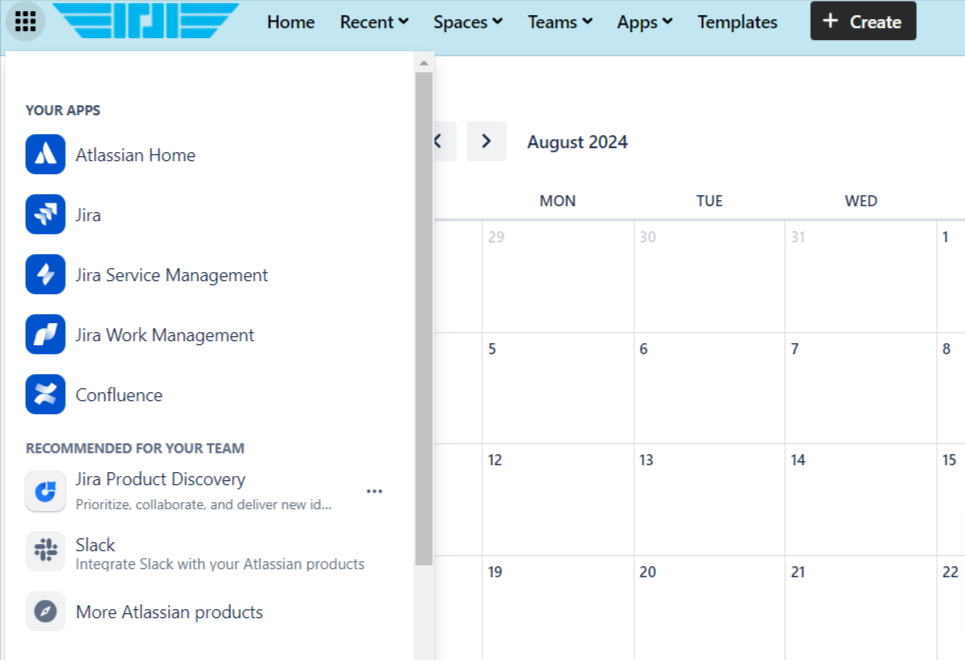
The Benefits of Integrating Jira and Confluence
Seamless Project Management and Documentation
Integrating Jira and Confluence allows teams to link project tasks with related documentation easily. For example, when working on a project, developers can use Jira to track coding tasks and link them to detailed technical documentation stored in Confluence. This integration helps ensure that all relevant information is readily accessible, reducing the time spent searching for documents and improving efficiency. Team members can quickly find everything they need in one place, leading to a more streamlined workflow.
Improved Collaboration and Communication
Effective communication is key to successful teamwork. When Jira and Confluence are integrated, team members can easily share updates, comments, and feedback. For instance, a team member can create a Confluence page to outline project requirements and link it to related Jira tasks. Other team members can comment directly on the Confluence page or the Jira issues, providing feedback and updates in real time. This integration ensures that everyone is on the same page, leading to better collaboration and fewer misunderstandings.
Enhanced Visibility and Transparency
One of the main benefits of integrating Jira and Confluence is the increased visibility it provides into project progress and status. Managers can use Jira to track the progress of tasks and issues and see how they align with the overall project plan stored in Confluence. This transparency helps teams identify potential bottlenecks early and make informed decisions. With clear visibility into project status, teams can stay on track and meet their deadlines more effectively.
Centralized Information and Easy Access
By integrating Jira and Confluence, teams can centralize all project-related information in one place. This centralization makes it easy for team members to access the information they need, whether it’s a task list in Jira or a project plan in Confluence. For example, a team member can quickly access a Confluence page from a Jira issue or view related Jira tasks from a Confluence page. This seamless access to information reduces the time spent searching for documents and ensures that everyone has the latest updates.
Reduced Duplication of Work
Integrating Jira and Confluence helps prevent duplication of work by linking related tasks and documents. For example, a project plan in Confluence can be linked to related tasks in Jira, ensuring that everyone is working from the same source of truth. This alignment helps reduce errors and ensures that work is completed efficiently. Team members can easily see which tasks are already being worked on and avoid duplicating efforts.

How to Integrate Jira and Confluence
Setting Permissions and User Roles
It’s important to manage permissions to ensure that team members have the right access to Jira and Confluence. Set up roles and permissions to control who can view, edit, and comment on tasks and documents. For example, developers might have edit access to Jira tasks but only view access to certain Confluence pages. Proper permissions help maintain data security and ensure that only authorized users can make changes.
Step-by-Step Guide to Setting Up Integration
- Connecting Jira to Confluence:
- To integrate Jira and Confluence, you first need to ensure that both tools are set up and that you have administrative access. Go to the admin settings in Confluence and look for the Jira integration option. Follow the prompts to connect your Jira instance to Confluence. You will need the Jira URL and may need to generate an API token for authentication.
- Once the connection is established, you can start linking Jira issues to Confluence pages. For example, you can link a Jira task to a Confluence page by pasting the Jira issue URL into the page. This link creates a direct connection between the task and the related documentation.
- Using Confluence Macros for Jira:
- Confluence offers several macros that make it easy to display Jira information on Confluence pages. For example, you can use the “Jira Issues” macro to show a list of Jira tasks directly in a Confluence document. This feature helps team members see project progress without switching between tools.
- To use the Jira Issues macro, create a new Confluence page or edit an existing one. Click on the “Insert more content” button (usually represented by a “+” sign), select “Jira Issue/Filter,” and then configure the macro to display the relevant Jira issues. You can filter issues by project, issue type, assignee, or other criteria.
- Synchronizing Information Between the Two Platforms:
- Once Jira and Confluence are connected, you can start linking tasks and documents. For instance, you can link a Confluence page to a Jira issue by simply pasting the Jira issue URL into the page. This integration ensures that all related information is connected, making it easy to keep track of project details.
- Synchronization between Jira and Confluence can be further enhanced using automation rules. For example, you can set up rules in Jira to automatically create Confluence pages for new epics or tasks. This automation ensures that all necessary documentation is created and linked, saving time and ensuring consistency.
Use Cases for Jira and Confluence Integration
Software Development Project Management
Software development teams can benefit greatly from integrating Jira and Confluence. Developers can use Jira to track coding tasks, bugs, and issues, while Confluence can be used to store technical documentation, API references, and meeting notes. For example, a developer working on a new feature can use Jira to track the coding task and link it to a Confluence page with detailed specifications and design documents. This integration ensures that all project information is easily accessible, improving development efficiency and reducing the risk of errors.

Product Roadmap and Backlog Management
Product managers can use Confluence to create and share product roadmaps and backlogs. By linking these documents to Jira, teams can track the progress of features and tasks. For example, a product manager can create a Confluence page outlining the product roadmap, with links to related Jira epics and tasks. This integration helps teams stay aligned with the product vision and ensures that everyone is aware of the project’s priorities. It also allows product managers to update the roadmap and backlog in real-time, providing clear visibility into the project’s status.
Knowledge Base and Documentation
Teams can use Confluence to create a knowledge base with articles, how-tos, and FAQs. By linking these documents to related Jira tasks or issues, support teams can quickly find the information they need to resolve customer queries. For example, a support agent can use a Confluence page to document a common issue and link it to a Jira issue for tracking purposes. This setup improves customer support and reduces response times, as agents can easily access relevant information and track the status of reported issues.
Agile Sprint Planning and Tracking
Agile teams can use Jira for sprint planning and tracking, while Confluence can be used to document sprint goals, user stories, and retrospectives. For example, during sprint planning, the team can create a Confluence page outlining the sprint goals and user stories, with links to the corresponding Jira tasks. This integration helps teams plan effectively and review their progress at the end of each sprint, leading to continuous improvement. By having all sprint-related information in one place, teams can easily track their progress and make adjustments as needed.
Incident and Bug Tracking
When managing incidents and bugs, it is crucial to have detailed documentation. Confluence can be used to document incident reports and solutions, while Jira tracks the progress of resolving these issues. For example, when a bug is reported, a Jira issue can be created to track its resolution, with a linked Confluence page providing detailed information about the bug and the steps taken to resolve it. This integrated approach ensures that all information about the incident is documented and accessible, improving response times and reducing the impact of incidents.
Best Practices for Integrating Jira and Confluence
Consistent Naming Conventions
Use consistent naming conventions for projects, tasks, and documents to ensure clarity and easy navigation. For example, use the same project name in both Jira and Confluence, and use descriptive titles for tasks and documents. This consistency helps team members find what they need quickly and reduces confusion.
Regularly Update Links and Information
Ensure that links between Jira and Confluence are regularly updated to reflect the latest project status. For example, if a Jira task is completed, update the linked Confluence page to reflect this change. Keeping links and information up-to-date ensures that everyone has access to the latest information and reduces the risk of outdated or incorrect information.
Training and Onboarding
Provide training for team members on how to use Jira and Confluence effectively. This training should cover basic features, integration setup, and best practices. For example, offer training sessions or create a Confluence page with tutorials and FAQs to help team members get up to speed quickly. Proper training ensures that team members can use the tools effectively and make the most of the integration.
Automation and Customization
Take advantage of automation features to streamline workflows. For example, use Jira automation rules to automatically create Confluence pages for new tasks or epics. Customizing Jira and Confluence to fit your team’s specific needs can further improve efficiency and productivity. Consider creating custom templates for Confluence pages or using Jira plugins to extend functionality.
Feedback and Continuous Improvement
Regularly gather feedback from team members on the integration and look for ways to improve. For example, conduct surveys or hold feedback sessions to understand how the integration is working and identify areas for improvement. Continuous improvement ensures that the integration continues to meet the team’s needs and supports ongoing productivity gains.
Common Challenges and How to Overcome Them
Challenge: Complexity of Integration Setup
Setting up integration between Jira and Confluence can be complex, especially for teams with limited technical expertise. To overcome this challenge, provide clear documentation and step-by-step guides for the setup process. For example, create a Confluence page with detailed instructions on how to connect Jira and Confluence, including screenshots and troubleshooting tips. Offering training sessions or workshops can also help team members understand the integration process.
Challenge: Managing Permissions
Managing permissions can be challenging, especially in large organizations with many users. To address this challenge, clearly define roles and responsibilities for accessing Jira and Confluence. For example, set up user roles in Jira and Confluence and assign permissions based on these roles. Regularly review and update permissions to ensure that they align with the team’s needs.
Challenge: Keeping Information Up-to-Date
Keeping information up-to-date across both Jira and Confluence can be challenging, especially as projects evolve. To overcome this challenge, establish clear guidelines for updating information and ensure that team members follow them. For example, create a checklist for updating links and information when tasks are completed or new information is added. Use automation tools to help keep information synchronized between Jira and Confluence.
Challenge: User Adoption
Getting team members to adopt and use the integrated tools effectively can be a challenge. To address this, provide training and support to help team members understand the benefits of integration and how to use the tools effectively. For example, create a Confluence page with training materials, tutorials, and best practices for using Jira and Confluence. Encourage team members to use the tools regularly and provide ongoing support to address any questions or concerns.
Future Trends and Developments
Enhanced Integration Features
As technology continues to evolve, we can expect to see enhanced integration features between Jira and Confluence. These features may include more advanced automation capabilities, improved user interfaces, and better integration with other tools. For example, future developments may allow for even more seamless synchronization between Jira and Confluence, making it easier to keep information up-to-date and accessible.
AI and Machine Learning
AI and machine learning are likely to play a growing role in project management and collaboration tools. For example, AI could be used to analyze project data and provide insights into team performance, identify potential risks, or suggest improvements. Machine learning could also be used to automate routine tasks, such as linking Jira issues to Confluence pages or creating project reports.
Greater Customization and Flexibility
Future developments may also focus on providing greater customization and flexibility for users. This could include more customizable templates, advanced reporting capabilities, and more options for integrating with other tools. For example, teams may be able to create custom workflows that better align with their specific processes and needs.
Conclusion
Integrating Jira and Confluence offers a powerful solution for enhancing productivity, improving collaboration, and streamlining project management. By connecting these two tools, teams can centralize their information, gain better visibility into project progress, and reduce duplication of work. Whether it’s managing software development projects, creating a knowledge base, or planning agile sprints, the integration of Jira and Confluence enables teams to work more efficiently and effectively.
As Atlassian partners, we have the expertise to help you fully leverage these tools for your organization’s specific needs. If you’re considering integrating Jira and Confluence, or looking to optimize your current setup, we’re here to guide you every step of the way. Contact us today to learn how we can help your team achieve greater productivity and collaboration with a tailored integration solution.
Effective team collaboration is key to success in today’s fast-paced work environment. Teams are often dispersed across different locations, working on multiple projects simultaneously, and dealing with large volumes of information. Keeping everyone aligned and productive can be challenging without the right tools. Confluence software, developed by Atlassian, offers a solution to these challenges.
This guide will explore how Confluence can significantly enhance team collaboration, streamline project management, and foster a more organized work environment. It will cover a detailed overview of Confluence, from its features to best practices for implementation, and how it compares to other collaboration tools. We’ll also share real-world case studies demonstrating the impact of Confluence in various organizational settings.
Understanding Confluence Software
What is Confluence?
Confluence is a collaboration platform designed to help teams share knowledge, manage projects, and collaborate more effectively. Developed by Atlassian, Confluence was first launched in 2004 and has since evolved into one of the most widely used collaboration tools worldwide. It’s particularly popular among software development teams but is also used across industries for content creation, project management, and document sharing.

Confluence serves as a central hub where team members can create and organize content in spaces and pages, which anyone within the organization can access. Whether it’s storing documents, tracking project progress, or facilitating discussions, Confluence brings everything together in one place.
Key Features of Confluence for Team Collaboration
- Workspaces, Pages, and Blogs: Confluence provides “spaces” that act as dedicated work areas for teams, departments, or projects. Within these spaces, teams can create “pages” to document everything from project plans to meeting notes. Additionally, the blogging feature allows teams to share updates, insights, and other important information in a more informal manner. Each space and page is searchable, making it easy for team members to find the information they need quickly.
- Real-time Editing and Comments: One of the standout features of Confluence is its real-time collaborative editing. Multiple team members can work on the same document simultaneously, with changes appearing instantly for everyone. This feature is particularly useful for brainstorming sessions or document reviews. The commenting feature allows team members to discuss content directly within the document, keeping conversations focused and reducing the need for endless email threads.
- Integration with Other Atlassian Tools: Confluence integrates seamlessly with other Atlassian products, such as Jira for issue tracking and Trello for task management. This integration enables teams to link Jira issues directly within Confluence pages or embed Trello boards, creating a unified workflow across different tools. The ability to bring all relevant information together in one place saves time and reduces the risk of miscommunication.
- Permissions and Access Control: Confluence offers robust permissions and access control, ensuring that sensitive information is only accessible to authorized team members. Admins can set specific permissions for spaces, pages, or even individual documents, allowing for fine-grained control over who can view, edit, or comment on content. This is particularly important in larger organizations where different teams may need access to different levels of information.
Setting Up Confluence for Your Team
Getting Started with Confluence
Setting up Confluence for your team is straightforward but requires careful planning to ensure it meets your team’s needs. Start by creating a space for your team, department, or project. Each space can be customized with your team’s branding, including logos and colors, to create a familiar environment.
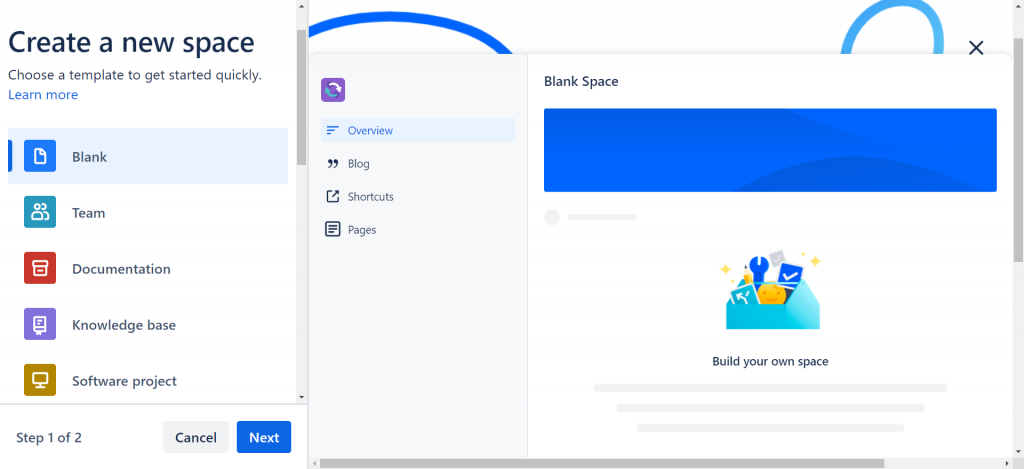
Within each space, you can create pages for different projects, documentation, or other relevant content. It’s helpful to start with a clear organizational structure in mind. For example, you might create parent pages for major projects and subpages for tasks, milestones, and deliverables. This hierarchy makes it easy to keep everything organized and accessible.
Creating and Managing Projects in Confluence
Confluence is particularly powerful for managing projects. You can use templates to quickly create project pages, such as project plans, timelines, and task lists. These templates are customizable, allowing you to adapt them to your specific project requirements.
For example, a typical project space might include pages for the project overview, key milestones, task assignments, and progress tracking. You can link related pages together, making it easy to navigate between different aspects of the project. Labels can be added to pages to group related content, making it easier to find specific information when needed.
Integrating Confluence with Other Tools
One of Confluence’s strengths is its ability to integrate with other tools your team might already be using. For instance, integrating Confluence with Jira allows you to link Jira issues directly into Confluence pages. This is particularly useful for development teams who need to track progress on specific tasks while keeping the broader project documentation in one place.

Confluence also integrates with Slack, allowing you to receive notifications when pages are updated or discussions are taking place. Google Drive integration lets you embed documents, spreadsheets, and presentations directly into Confluence pages. These integrations ensure that your team stays in sync without constantly switching between different tools.
Detailed Setup Guide:
- Create Your First Space: Begin by setting up a space for your team or project. Customize it with your team’s branding to create a familiar environment.
- Organize with Pages: Create parent pages for major projects and subpages for tasks and milestones. Use a clear hierarchy to keep everything organized.
- Use Templates: Start with Confluence’s project management templates to set up pages quickly. Customize these templates to meet your specific needs.
- Set Permissions: Ensure that sensitive information is only accessible to authorized team members by setting up appropriate permissions for spaces and pages.
- Integrate Other Tools: Link Jira issues, embed Google Drive documents, and set up Slack notifications to create a seamless workflow across different tools.
Best Practices for Boosting Team Collaboration
Organizing Information and Documentation
The key to getting the most out of Confluence is keeping your content well-organized. Clear titles and a logical structure are essential. Start by using consistent naming conventions for your spaces and pages. This makes it easier for team members to understand what each page is about at a glance.
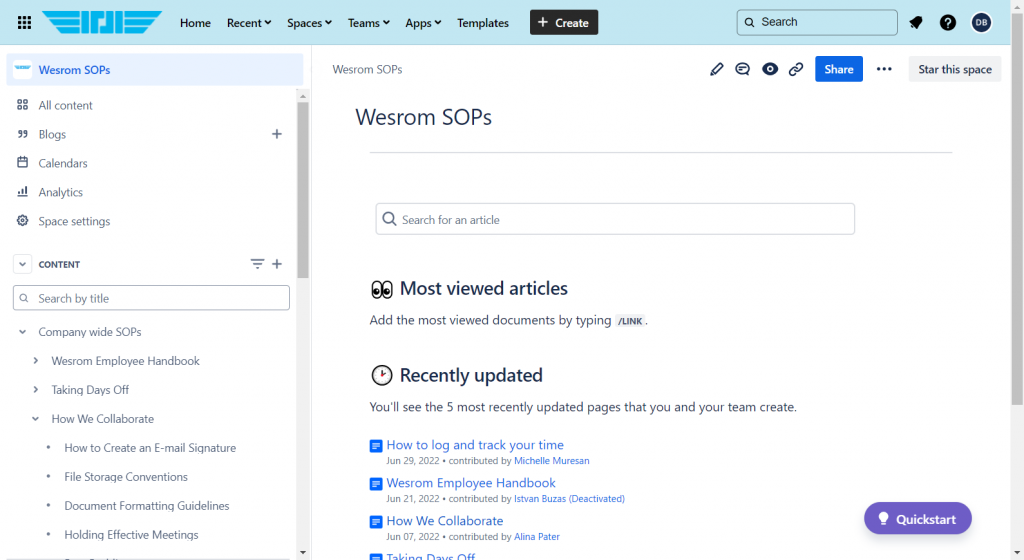
For example, if you’re working on multiple projects, consider creating a dedicated space for each project. Within each space, you can have parent pages for different aspects of the project, such as “Project Overview,” “Milestones,” “Task Assignments,” and “Meeting Notes.” Subpages can then be created under each parent page for more specific content.
Enhancing Communication with Confluence
Effective communication is essential for team collaboration, and Confluence offers several features that help facilitate this. Use comments and mentions to keep discussions relevant and on-topic. For example, if you need input from a colleague, simply mention them in a comment, and they’ll receive a notification.
Dashboards and reports can also be set up to provide an overview of project progress. For instance, you can create a dashboard that aggregates all ongoing tasks, upcoming deadlines, and recent updates. This ensures that everyone on the team has a clear understanding of the project’s status at a glance.
Optimizing Workflow with Confluence
Confluence supports various macros and plugins that can help automate tasks and optimize your team’s workflow. The task list macro, for example, allows you to create and assign tasks directly within a page. This can be particularly useful for project management, as it keeps tasks linked to relevant documentation.
Plugins can add advanced functionality to Confluence. For instance, you might use a plugin to generate more detailed reports or to integrate Confluence with additional tools your team uses. By setting up workflows that align with your team’s processes, you can save time and reduce the chances of tasks being overlooked.
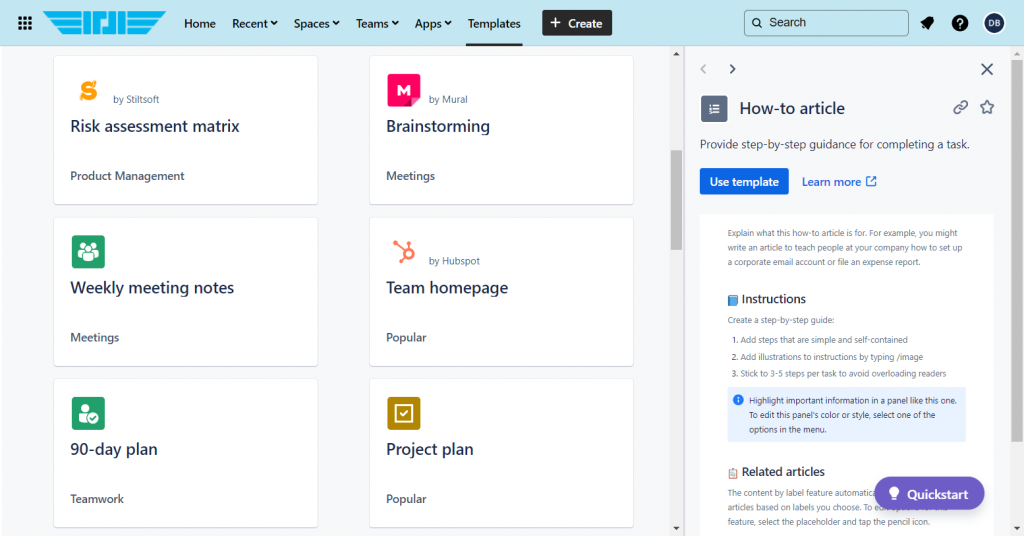
Detailed Best Practices:
- Consistent Naming Conventions: Use clear and consistent names for spaces and pages to keep content organized.
- Leverage Labels: Add labels to pages to group related content, making it easier to find.
- Use Comments and Mentions: Keep discussions focused by using comments and mentions. This ensures relevant team members are looped into the conversation.
- Set Up Dashboards: Create dashboards to give your team a clear overview of project progress, upcoming tasks, and recent updates.
- Automate with Macros and Plugins: Use macros to create task lists and plugins to add advanced functionality, optimizing your team’s workflow.
Case Studies and Real-World Examples
As an Atlassian Solution Partner, we’ve had the privilege of working closely with numerous clients to help them transform their businesses through the effective use of Atlassian tools, including Jira Software, Confluence, Bitbucket, and Opsgenie. By understanding the unique challenges these organizations faced, we were able to implement solutions that not only addressed their immediate needs but also set them up for long-term success. Below are three real-life examples where Confluence played a pivotal role in improving team collaboration and organizational efficiency.
Example 1: Improving Remote Team Collaboration in a Marketing Agency
A marketing agency approached us with a challenge: their global team was struggling to maintain cohesion and communication across different time zones. Relying heavily on email, they faced issues with miscommunication, version control, and lost feedback, all of which were impacting the quality of their campaigns and slowing down project timelines.
We introduced Confluence as a central hub for collaboration. We helped them set up a structured workspace where all project-related information could be easily accessed and updated. The team organized their Confluence space into sections like “Campaign Ideas,” “Content Calendar,” and “Feedback,” ensuring that all information was centralized and easy to navigate.
By leveraging Confluence’s real-time editing and commenting features, team members could collaborate on campaign ideas and content pieces asynchronously, reducing the delays caused by differing time zones. The result was a dramatic improvement in communication flow, quicker decision-making, and higher-quality deliverables. The team also saw a reduction in the number of emails exchanged, as most discussions were now taking place directly within Confluence pages, keeping all feedback and updates in one place.
Example 2: Streamlining Project Management in an IT Department
A mid-sized company’s IT department was facing inefficiencies in managing their software development projects. They were using a mix of tools to track issues, document processes, and communicate progress, which led to confusion and wasted time as team members frequently had to switch between platforms.
As an Atlassian partner, we recommended an integrated solution using Confluence and Jira Software. We helped them create a dedicated project space in Confluence where all project documentation could be stored and organized. We also set up an integration with Jira, allowing the team to link Jira issues directly within their Confluence pages. This integration meant that developers could see the full context of their work, with all relevant documentation and issue-tracking information in one place.
The IT department adopted a structured approach, using Confluence templates to set up project pages that included overviews, timelines, and task assignments. Linking Jira issues to these pages provided the team with a clear view of project status, including completed tasks and outstanding work. This integration not only streamlined their workflow but also improved project transparency, allowing stakeholders to easily track progress without needing to dive into multiple tools. As a result, the department experienced a noticeable increase in productivity and a reduction in project bottlenecks.
Example 3: Managing Knowledge and Documentation in a Large Healthcare Organization
knowledge base across multiple departments. With hundreds of employees relying on up-to-date information to perform their duties, the organization needed a solution that would allow them to organize and disseminate information efficiently.
We worked with them to implement Confluence as a centralized knowledge hub. Each department was given its own space within Confluence, tailored to their specific needs, such as policy documentation, training materials, and operational procedures. We also integrated Bitbucket to manage version control of sensitive documents, ensuring that the most current and accurate information was always available.
To ensure that updates were communicated effectively, the organization used Confluence’s blogging feature to post regular updates and announcements. This helped keep all employees informed of any changes in procedures or new developments in the organization. Additionally, by utilizing Confluence’s powerful search and labeling features, employees could quickly find the information they needed, reducing the time spent searching for documents and improving overall operational efficiency.
Through our partnership, the organization was able to significantly reduce the complexity of managing their knowledge base, ensuring that all employees had easy access to the information they needed. This not only improved efficiency but also enhanced the quality of care they provided to their patients.
Lessons Learned
These case studies highlight the adaptability and effectiveness of Confluence in a variety of business environments. Whether it’s improving communication in a remote team, streamlining project management in an IT department, or managing a complex knowledge base in a large organization, Confluence has proven to be a powerful tool. As an Atlassian Solution Partner, we’ve seen firsthand how the thoughtful implementation of these tools can transform the way organizations operate, making them more efficient, cohesive, and better equipped to meet their goals.
Confluence vs. Other Collaboration Tools
Comparison with Other Popular Tools
When choosing a collaboration tool, it’s important to consider the specific needs of your team. Confluence is often compared with other popular tools like Trello, Asana, and Notion, each of which has its strengths and weaknesses.
- Trello: Trello is an excellent tool for task management, offering a visual approach to organizing tasks using boards, lists, and cards. However, Trello is primarily focused on task management and lacks the deep content creation and organization features that Confluence offers. For teams that need robust documentation and knowledge-sharing capabilities, Confluence is the better choice.
- Asana: Asana is a powerful project management tool with features designed to help teams track tasks, set deadlines, and manage workflows. While Asana excels in project management, it doesn’t offer the same level of content creation and organization that Confluence provides. Teams using Confluence benefit from having all their project documentation, task tracking, and collaboration tools in one place, especially when integrated with Jira.
- Notion: Notion is a flexible tool that combines elements of note-taking, task management, and database creation. It’s similar to Confluence in that it allows for the creation of pages and databases, but Notion lacks the seamless integration with other Atlassian tools like Jira and Trello. For development teams, this integration is a significant advantage of Confluence.
Why Choose Confluence?
Confluence stands out as a comprehensive collaboration tool that combines powerful content creation, robust project management, and seamless integration with other tools. It’s particularly well-suited for teams already using other Atlassian products, but its flexibility makes it a valuable tool for teams across various industries.
Teams that need to manage complex projects, organize large volumes of information, and ensure effective communication will find Confluence to be a robust solution. Its ability to integrate with other tools, control access, and facilitate real-time collaboration makes it an excellent choice for teams looking to improve their collaboration and productivity.
Final Thoughts
Confluence software offers a versatile and powerful solution for improving team collaboration. By leveraging its features effectively, teams can create a more organized, efficient, and connected working environment. Whether you’re managing projects, creating documentation, or facilitating communication, Confluence provides the tools needed to achieve your goals. As you implement Confluence within your team, remember to continuously refine your processes and explore the full range of features to maximize its impact on your collaboration efforts.
As an Atlassian Solution Partner, we’ve seen firsthand how Confluence can revolutionize the way teams collaborate and manage information. Whether you’re a small team needing a better way to share knowledge or a large enterprise looking to streamline complex projects, Confluence offers the flexibility and power to meet your needs.
Our experience across various industries has shown that when Confluence is implemented thoughtfully, it not only improves communication and organization but also drives significant efficiency gains. The ability to integrate seamlessly with other Atlassian tools like Jira, Bitbucket, and Opsgenie further enhances its value, creating a cohesive environment where all your work can come together.
If you’re considering Confluence for your team, we invite you to reach out to us for a consultation. Let’s explore how Confluence can be tailored to your specific needs and help you unlock the full potential of your team’s collaboration.
Bitbucket continues to be one of the most popular tools in software development, offering Git repository management and collaboration features that appeal to teams of various sizes. Understanding Bitbucket’s strengths and weaknesses is crucial, especially in light of recent updates. This article examines Bitbucket’s pros and cons, compares it with competitors, and offers recommendations for different types of teams.
Overview of Bitbucket in 2024
What is Bitbucket?
Bitbucket is a Git repository management solution that allows developers to manage their source code, track changes, and collaborate with team members. Originally launched in 2008, Bitbucket has evolved significantly over the years, especially after being acquired by Atlassian in 2010. In 2024, Bitbucket continues to be a key player in the software development ecosystem, providing both cloud-based and self-hosted options to accommodate a wide range of team needs.
Key Updates and Changes in 2024
This year has seen several updates to Bitbucket, aimed at improving its functionality and user experience. One of the most significant updates is the improvement of Bitbucket Pipelines, which now offers better performance and more customization options. These enhancements make it easier for development teams to set up and manage Continuous Integration/Continuous Delivery (CI/CD) workflows, ensuring faster and more reliable software delivery.
Additionally, Bitbucket has introduced new security features, including advanced user authentication methods and more robust access controls. These updates are particularly important for teams working in highly regulated industries, where data security and compliance are crucial.

Pros of Bitbucket in 2024
Integration with Atlassian Tools
One of Bitbucket’s standout features is its seamless integration with other Atlassian products, such as Jira, Confluence, and Trello. This integration allows teams to connect their development workflows with project management and documentation tools, creating a cohesive environment for collaboration.
For example, developers can link Jira issues directly to specific commits or pull requests in Bitbucket, providing real-time updates on the status of tasks. This linkage streamlines project management, as it allows project managers and team leads to track the progress of development work without needing to switch between different platforms.
Moreover, the integration with Confluence enables teams to document their code and processes effectively. By embedding code snippets and repository links directly into Confluence pages, teams can create comprehensive documentation that is easily accessible and always up to date.
Comprehensive CI/CD with Bitbucket Pipelines
Bitbucket Pipelines is a built-in CI/CD service that allows teams to automate the process of building, testing, and deploying code. The service is integrated directly into Bitbucket, making it easy to set up and manage pipelines without needing to configure external tools.
In 2024, Bitbucket Pipelines has been enhanced with better performance and more customization options. For instance, teams can now use reusable pipelines, which allow them to define common tasks once and reuse them across multiple projects. This feature reduces the time and effort required to maintain CI/CD workflows, making it easier to scale development operations.
Furthermore, Bitbucket Pipelines supports integration with popular cloud providers such as AWS, Azure, and Google Cloud, enabling teams to deploy their applications directly from the pipeline. This integration simplifies the deployment process, allowing teams to focus more on coding and less on the complexities of deployment.
Flexible Deployment Options
Bitbucket offers flexibility in deployment, catering to teams with varying needs and infrastructure requirements. Teams can choose between Bitbucket Cloud, which is hosted by Atlassian, and Bitbucket Data Center, which allows teams to host their repositories on-premises or in their own cloud environments.
Bitbucket Cloud is ideal for teams that want a managed service with minimal maintenance overhead. It offers automatic updates, security patches, and scalability, making it suitable for small to medium-sized teams that need a reliable and hassle-free solution.
On the other hand, Bitbucket Data Center provides more control over the hosting environment, which is critical for large enterprises with strict security and compliance requirements. This option allows teams to customize their setup, integrate with existing infrastructure, and meet specific regulatory standards.
Advanced Code Review Features
Code review is a critical part of the development process, ensuring that code is of high quality and adheres to best practices. Bitbucket’s advanced code review features make it easier for teams to collaborate on code changes and maintain consistent standards across projects.
One of the key features of Bitbucket’s code review process is in-line commenting, which allows reviewers to leave comments directly within the code. This feature facilitates targeted feedback and helps developers address specific issues without sifting through lengthy review notes.
Additionally, Bitbucket supports pull request management, where teams can review and discuss changes before merging them into the main codebase. This process includes mandatory approvals, ensuring that code changes are thoroughly vetted by multiple team members before being integrated. In 2024, these features have been further refined, making the code review process smoother and more efficient.
Security and Compliance Features
In 2024, Bitbucket introduced several new security features designed to protect sensitive data and ensure compliance with industry standards. Security is a major concern for development teams, especially those working with sensitive information or in regulated industries.
Bitbucket offers single sign-on (SSO) and two-factor authentication (2FA) as standard security measures, reducing the risk of unauthorized access. Additionally, Bitbucket supports IP whitelisting, allowing teams to restrict access to their repositories based on specific IP addresses.
For teams that require even stricter security controls, Bitbucket’s self-hosted options provide the ability to implement custom security protocols and meet specific compliance requirements. This flexibility is particularly valuable for organizations operating in sectors like finance, healthcare, or government, where data protection is critical.
Marketplace and Integration Ecosystem
Bitbucket’s ecosystem is further enhanced by the Bitbucket Marketplace, where users can find a wide range of apps and plugins to extend the platform’s functionality. Whether you need tools for code analysis, monitoring, or deployment, the Marketplace offers a variety of options to enhance your workflow.
For instance, developers can integrate static code analysis tools to automatically check for vulnerabilities or code quality issues as part of their CI/CD pipelines. This proactive approach helps teams catch and address potential problems early in the development process, improving the overall quality of the codebase.
The Marketplace also offers integration with other popular tools and services, such as Slack, Microsoft Teams, and Jenkins. These integrations allow teams to connect Bitbucket with their existing tools, creating a more streamlined and efficient development environment.
Cons of Bitbucket in 2024
Learning Curve and User Experience
While Bitbucket offers a robust set of features, some users may find the platform challenging to navigate, especially if they are new to Git or Atlassian products. Compared to competitors like GitHub, Bitbucket’s interface can be less intuitive, leading to a steeper learning curve for new users.
This learning curve can be a barrier for teams that need to onboard new members quickly or prefer a simpler user experience. For instance, developers who are accustomed to GitHub’s more user-friendly interface may find Bitbucket’s layout and navigation somewhat complex.
Moreover, certain advanced features in Bitbucket, such as custom pipelines or deployment configurations, may require a deeper understanding of the platform and its underlying technologies. This complexity can slow down the onboarding process and increase the time it takes for new users to become proficient with the tool.
Pricing and Cost Considerations
Bitbucket’s pricing structure is another factor to consider, particularly for small teams or startups. While Bitbucket offers a free tier, which includes basic features for up to five users, more advanced features and higher user limits require a paid plan.
For larger teams or those with more complex needs, the costs can quickly add up. Bitbucket’s pricing is tiered based on the number of users and the level of features required, which can make it less affordable for teams on a tight budget.
However, with Atlassian’s recent launch of the Atlassian for Startups program in 2024, eligible startups can now access Bitbucket and other Atlassian tools for free for a year, which could mitigate some of these concerns temporarily.
Still, for long-term use, the pricing structure might require startups to reassess whether Bitbucket is the most cost-effective option, especially as they scale. As a result, it’s important for organizations to carefully evaluate their needs and growth projections when considering Bitbucket’s pricing model.
Performance and Scalability Concerns
Performance and scalability are critical considerations for any development team, particularly those working with large repositories or handling numerous concurrent users. In some cases, Bitbucket can struggle with performance issues, especially in self-hosted environments where infrastructure limitations may affect speed and reliability.
For example, teams with very large codebases or complex CI/CD workflows might experience slower load times or delayed build processes. These performance issues can impact productivity, particularly for teams that rely on fast feedback loops and continuous deployment.
Scalability can also be a challenge, particularly for growing teams that require high availability and fast access times. While Bitbucket Cloud offers better scalability and performance out of the box, self-hosted options may require significant investment in infrastructure and maintenance to achieve similar levels of performance.
Limited Community and Support Resources
Compared to GitHub, Bitbucket has a smaller community, which can limit the availability of third-party tutorials, plugins, and community-driven support. This smaller community can make it more difficult to find solutions to specific problems or customize Bitbucket to fit unique use cases.
For example, developers looking for community-created scripts, integrations, or troubleshooting advice may find fewer resources available for Bitbucket than for its competitors. This limitation can slow down development or require teams to invest more time in custom development to meet their needs.
Additionally, while Atlassian provides official support, some users find it lacking, particularly when dealing with more complex issues in self-hosted environments. Support response times and the depth of technical knowledge available can vary, which may not be ideal for teams that require quick and reliable assistance.
Comparing Bitbucket with Competitors
In 2024, the landscape of Git repository management tools is more competitive than ever. Bitbucket faces stiff competition from platforms like GitHub and GitLab, each with its own strengths and weaknesses. Here’s a comparison to help you understand how Bitbucket stacks up against its main competitors.

Bitbucket vs. GitHub
GitHub is arguably the most popular Git repository management platform, known for its user-friendly interface and strong community support. GitHub excels in providing a straightforward user experience, making it a go-to choice for individual developers and open-source projects.
In contrast, Bitbucket’s strengths lie in its integration with Atlassian products and its advanced CI/CD capabilities through Bitbucket Pipelines. For teams already using Jira or Confluence, Bitbucket offers a more cohesive and integrated development environment.
However, GitHub’s extensive marketplace and large community can be a significant advantage for teams looking for a wide range of plugins, integrations, and third-party resources. Additionally, GitHub’s pricing structure, particularly for teams, can be more cost-effective, depending on the features required.
Bitbucket vs. GitLab
GitLab is another strong competitor, offering an all-in-one DevOps platform that includes Git repository management, CI/CD pipelines, issue tracking, and more. GitLab’s comprehensive feature set makes it appealing for teams looking for a single platform to manage the entire development lifecycle.
Bitbucket, while robust, may require integration with additional tools to match GitLab’s all-in-one approach. However, for teams that prefer to use best-in-class tools for each stage of development, Bitbucket’s flexibility and integration options can be more advantageous.
In terms of pricing, GitLab offers competitive plans, particularly for larger teams. However, Bitbucket’s tighter integration with Atlassian tools might justify its cost for teams heavily invested in the Atlassian ecosystem.
Bitbucket vs. AWS CodeCommit
AWS CodeCommit is Amazon’s Git repository management service, integrated tightly with other AWS services. It’s an attractive option for teams already using AWS, as it simplifies repository hosting within the AWS environment.
Bitbucket offers more advanced features, particularly in terms of CI/CD pipelines and integration with non-AWS tools. While CodeCommit is suitable for teams fully committed to the AWS ecosystem, Bitbucket provides greater flexibility for those using a mix of tools and services.
In terms of pricing, AWS CodeCommit can be more cost-effective for small teams or those already heavily invested in AWS. However, Bitbucket’s broader feature set and integrations may provide better value for teams with more diverse needs.
Use Cases and Recommendations
Given the pros and cons outlined above, Bitbucket is well-suited for specific types of teams and projects. Here’s a breakdown of the scenarios where Bitbucket shines and where you might consider alternatives.
Best Use Cases for Bitbucket
- Teams Using Atlassian Tools: If your team is already using Jira, Confluence, or other Atlassian products, Bitbucket is a natural choice. The seamless integration between these tools can significantly enhance productivity and streamline workflows.
- Enterprises with Strict Security Requirements: Bitbucket Data Center is ideal for large enterprises that need to host their repositories on-premises or in a private cloud. The ability to implement custom security protocols makes it a strong choice for industries with stringent compliance requirements.
- Teams Requiring Advanced CI/CD Pipelines: Bitbucket Pipelines offers robust CI/CD capabilities directly integrated into the platform. Teams that need flexible and powerful build and deployment pipelines will find Bitbucket Pipelines to be a valuable tool.
- Teams Seeking Flexibility in Deployment: Bitbucket’s cloud and self-hosted options provide flexibility for teams with different infrastructure needs. Whether you need a managed service or full control over your environment, Bitbucket offers options that can accommodate your requirements.
When to Consider Alternatives
- Small Teams on a Budget: If you’re a small team or startup with limited funds, GitHub or GitLab might offer more cost-effective solutions with sufficient features for your needs.
- Teams Seeking a Large Community and Extensive Resources: GitHub’s larger community and extensive resources can be a significant advantage for teams that rely on community support, plugins, and third-party integrations.
- Teams Fully Committed to AWS: For teams deeply integrated into the AWS ecosystem, AWS CodeCommit might be a better fit due to its tight integration with other AWS services and cost-effectiveness.
Future Outlook for Bitbucket
Looking ahead, Bitbucket is likely to continue evolving to meet the demands of modern development teams. As CI/CD becomes increasingly critical in software development, Bitbucket Pipelines is expected to see further enhancements, making it even more powerful and user-friendly.
Additionally, security will remain a top priority, particularly as more teams adopt cloud-based solutions. Bitbucket’s ongoing efforts to improve its security features will be crucial in maintaining its appeal to enterprise customers with strict compliance requirements.
Furthermore, Atlassian’s focus on integrating its suite of tools more tightly will likely continue, offering teams an even more cohesive and efficient development environment. This ongoing integration will be a key differentiator for Bitbucket, especially for teams already invested in the Atlassian ecosystem.
Conclusion
Bitbucket remains a strong contender in the Git repository management space, offering robust features and deep integration with Atlassian products. While it has its drawbacks, particularly in terms of user experience and cost, it excels in areas such as CI/CD, security, and flexibility in deployment options.
For teams that are already using Atlassian tools or require advanced CI/CD capabilities, Bitbucket is an excellent choice. However, small teams or those seeking a large community and extensive resources might find better value in alternatives like GitHub or GitLab.
As we move further into 2024, Bitbucket’s continued focus on security, CI/CD, and integration with the broader Atlassian suite will likely keep it relevant and valuable to development teams around the world.
Whether you’re a small startup or a large enterprise, understanding Bitbucket’s pros and cons is crucial for making an informed decision. If you need assistance with Bitbucket or any other Atlassian product, our specialists are here to help with everything from purchase and implementation to migrations, integrations, consulting, and training. Book a free consultation with one of our experts today to discover how we can support your team’s success.